 This paper – the fourth in a series about Alto de Pitis, all published in TRACCE – discusses some specific petroglyphs on Boulder AP3-098, focusing on the possible therianthrope on one of its panels.
This paper – the fourth in a series about Alto de Pitis, all published in TRACCE – discusses some specific petroglyphs on Boulder AP3-098, focusing on the possible therianthrope on one of its panels.
By Maarten van Hoek
*
*
The Case of Boulder AP3-098, Alto de Pitis
Majes Valley, Southern Peru
Revised version – updated 29 August 2023
Maarten van Hoek
*
Introduction
This paper presents the fourth case in my series of articles in which I discuss a selection of (often large) decorated boulders at Alto de Pitis, a major rock art site in the Majes Valley of southern Peru (Figure 1). The selected boulders have a range of idiosyncratic petroglyphs belonging to the so-called Majes Rock Art Style (MRAS) that is so typical for west Arequipa. During several surveys my wife Elles and I documented over 400 boulders with petroglyphs at Alto de Pitis, many of which are unique, not only for Alto de Pitis, the Majes Valley or Arequipa, but also for the whole of the Desert Andes, the extremely dry desert area west of the High Andes. This study focusses on one specific boulder at Alto de Pitis, Boulder AP3-098, an enormous block of stone that – despite its size – is completely invisible from anywhere in the valley.
Figure 1: Location of Alto de Pitis in the Central Majes Valley, southern Peru. Map © by Maarten van Hoek, based on the map © by OpenStreetMap – Contributors.
Click on any illustration to see an enlargement.
*
Boulder AP3-098: Location
The whole rock art complex of Alto de Pitis measures about 4000 m from south to north by about 700 m maximum from west to east. Based on our surveys, I have divided the rock art site of Alto de Pitis into four Sectors, labelled (from south to north) AP1 to AP4 (Figure 2A). Boulder AP3-098 is located at the extreme eastern edge of Sector AP3 (at 16°15’37.12″ S and 72°26’34.76″ W in Google Earth 2023). The huge boulder is found at an altitude of 530 m asl, some 660 m due east of the steep cliff bordering the east bank of the valley. Directly west of the steep cliff the valley floor is found at 410 m, while the River Majes – further west – is at about 390 m. Thus Boulder AP3-098 is found some 140 m above the centre of the valley floor. East of the site rises a series of high hills (highest point at Cerro Gentilar, at 1435 m asl; see cover photo) completely blocking all views to the east. Views to the west and north are blocked by low hillocks, while the views to the southeast and south are more extensive, but offer only prospects of the undulating plateau of Alto de Pitis and the hills beyond (see Figure 5).
Figure 2: Location of Boulders AP3-098 and AP3-065 at Alto de Pitis. A: General location; B: Detail map of the locations (notice the convergence of tracks at the Hill Top Group. Maps © by Maarten van Hoek, based on Google Earth.
In 2013 I wrote about Boulder AP3-098 that it has a “Negative Prospect. A Positive Prospect is only possible from near (south of and uphill from) this boulder.” (Van Hoek 2013: 121). A “Negative Prospect” means that Apu Coropuna is not visible when standing in front of the SE facing Panel H or at the sides of the boulder. However, it may be possible that when walking only a short distance northwards and/or westwards uphill the low hillocks, Apu Coropuna will eventually become visible (I did not check that). About 35 m SW of Boulder AP3-098 is the important cluster of decorated boulders of The Hill Top Site (Figures 2 and 3), from where Apu Coropuna is definitely visible (Figure 3).
What is the significance of Apu Coropuna? Nevado Coropuna – the highest volcano in Peru (for the location see Figure 1) – is revered as one of the most Sacred Mountains (Apus) of southern Peru. I have convincingly demonstrated (Van Hoek 2013) that especially Alto de Pitis houses a plethora of specific life-death related petroglyphs (mainly “Carcanchas” [Skeleton-Anthropomorphic figures] and some Mummy Bundles). In my opinion the “Carcanchas” symbolise the invisible road along which the deceased souls travelled to the top of Apu Coropuna, where – on the snow-clad top of the mountain – their deities and ancestors reside(d). Importantly, at that time (Van Hoek 2013: Fig. 146) Alto de Pitis was regarded by me to be the only rock art site in the valley with uninterrupted views towards Apu Coropuna (located about 83 km to the NNW of Boulder AP3-098) (Figure 3). However, it proves that now – 2023 – Apu Coropuna can also be observed from the rock art site of Punta Colorada (PC in Figure 2), located only a very short distance from Alto de Pitis across the valley (Van Hoek 2022a), and from the minor rock art site of Viraco (located only 20 km SE of Apu Coropuna). Importantly, Boulder AP3-098 also has an Apu-related petroglyph on one of its many decorated panels.
Figure 3: View across the Hill Top Group looking NNW towards Apu Coropuna and view of Boulder AP3-098 at Alto de Pitis, southern Peru. The size of the boulders can be estimated when comparing them with the figure of my wife, Elles, in the centre of the photo. Photograph © by Maarten van Hoek.
It may also be important that the area of Alto de Pitis is criss-crossed by numerous tracks, many of which will be very old (although it is hard to determine which path is prehistoric and which track is recent). There are narrow single-line tracks and bands of many parallel tracks that most likely indicate that the area was crossed by camelid-caravans in ancient times. It seems that a number of (ancient?) tracks converge at the Hill Top Group and that one of those tracks passes Boulder AP3-098 immediately at its NW side (see Figure 2). Also the old (now unused) main road from Vítor to Majes crosses the AP3 Section of Alto de Pitis. It was used – among many others, mainly locals – by American explorer Hiram Bingham, who was the first researcher to record petroglyphs at Alto de Pitis and reporting them in a publication (Bingham 1912). Nowadays a new bridge crosses the river Majes at Punta Colorada (Van Hoek 2022b: Fig. 3).
*
The Panels of Boulder AP3-098
Although I did not take any measurements, I estimate Boulder AP3-098 to measure about 3 to 3.5 m in width across the SE facing panel (Panel H) and about 4 to 4.5 m from its SW corner to its norther end. Also, no measurements were taken of the petroglyphs, but especially the petroglyphs on Panel H are very large (the feline has been depicted in more than life-size). Because the boulder has so many panels facing in almost every direction, it will prove to be impossible – when having only very limited time at the spot – to make photos of every panel in optimal light conditions. Ideally, slanting sun light is necessary to see the petroglyphs clearly. Therefore it will not be attempted to describe every panel in detail, also because – due to wind-erosion – many panels have weathered and eroded quite a bit.
Panel A: On the NE facing Panel A (all bearings are only approximated) are several MRAS images, including a zigzag (Z in Figure 4) flanked by two Majes “Dancers” (D), a long serpentine figure (S), a faint feline (F) and some indeterminate petroglyphs (?).
Figure 4: Panel AP3-098A. Photograph © by Maarten van Hoek.
Panel B: This smaller panel has a few almost invisible petroglyphs on the east and upwards facing panel above Panel A (Figure 4).
Panel C: Severely mottled and weathered Panel C (Figure 5) has a number of petroglyphs (hard to distinguish), including one MRAS bird petroglyph (B). Resting against the bottom of Panel C is Boulder AP3-099 with – on Panel A – two zigzags apparently transformed into Majes “Dancers” (thus having only one leg). On Panel AP3-099B is a third Majes “Dancer”.
Figure 5: Panel AP3-098C and Boulder AP3-099. Photograph © by Maarten van Hoek.
Panel D: On the largest part of the west facing Panel D (Figure 6) are several petroglyphs, including a “wheel?” and a row of three strangely bent-over Majes “Dancers”, the “leading” one superimposed by a smaller anthropomorphic figure (Figure 7). These three Majes “Dancers” confirm that many Majes “Dancers” are most likely not dancing at all (for more details see Van Hoek 2022c). It is just our western mind jumping to conclusions (see Van Hoek 2023a), often without expressing any doubt (hence my “…” labelling of Majes “Dancers”).
Figure 6: Panels AP3-098D to G. Photograph © by Maarten van Hoek.
Figure 7: The three Majes “Dancers” on Panel D. Drawing © by Maarten van Hoek.
Panel E: This small panel of the boulder has a few almost invisible petroglyphs on a west and upwards facing surface above Panels D and F (see Figure 6).
Panel F: This small panel has a few almost invisible petroglyphs on the west facing panel to the right of Panel D (see Figure 6). Discernible with some effort are a Majes “Dancer” (D), a quadruped (C) and a Majes “Spitter” (S).
Figure 8: Panel AP3-098G – upper part. Photograph © by Maarten van Hoek.
Panel G: West facing Panel G has (at its lower half) a Majes “Spitter” and – at its upper part – a bird petroglyph (Figure 8).
Panel H: This is the panel with the most remarkable set of petroglyphs; the focus of this study (Figures 9 and 10). Apart from a few apparently randomly arranged lines (?) most notable is a large, outlined image of a feline depicted in profile, except for its frontally drawn head that is seen in “twisted perspective” (only showing eyes and six short lines that have been interpreted by me as whiskers). It has a long tail and two short and straight legs ending in three digits. Its body is filled with several (uncertain, hence the “?”) markings. To the right of the feline is what could be an anthropomorphic figure depicted fully frontally. Remarkably, its head shows possible whiskers, an open, circular mouth and two eyes, each with a central dot depicting the pupil. It has two (more thinly engraved) arms that seem to have been added at a later stage, as well as two (more thinly) engraved legs (one ending in a boot-resembling foot) that are only partially visible. The other leg and one hand are also uncertain (hence the “?”).
Figure 9: Panel AP3-098H. Photograph © by Maarten van Hoek.
Figure 10: Panel AP3-098H. Drawing © by Maarten van Hoek.
Most importantly, the thorax of the anthropomorph has a group of four parallel, diagonally arranged lines (only at one side) that most likely represent ribs, thus confirming that this figure is an (unfinished?) “Carcancha”; A Skeleton-Anthropomorph (an icon lengthily discussed in Van Hoek 2013). However, the head looks in some respect like a feline head and for that reason I would like to tentatively suggest that the figure is a possible therianthrope (in this case a “Feline-Man”; Mind you, in cases where I speak of “Man”, it is also possible that a female individual has been depicted). This petroglyph brings me to discuss the possibility of therianthropes and other conflations having been depicted in the Majes Rock Art Style (MRAS).
*
Of Conflations and Therianthropes
In order to avoid any confusion it is essential to clearly define the difference between a “Conflation” and a “Therianthrope”. In this study a conflation in rock art is an amalgamation of two or more different elements, while at least one component has to be biomorphic. This means that even an abstract element may have been combined with a biomorphic element. Fine examples are the anthropomorphised “solar” symbols (for instance at the Río Caravelí Site; Van Hoek 2022d: Fig. 15) and the anthropomorphic “Pipette” Designs that are so characteristic for the petroglyph site of Ariquilda in northern Chile (Van Hoek 2017). Also objects can be found combined with biomorphic features, like the petroglyph of a paddle with a human face from Rapa Nui (Lee 1992: 4.97). Furthermore, a conflation may also involve a combination of a plant-element and another component. For instance, combinations of plant-like elements and humans are called “phytanthropes” (occurring for instance at rock art sites in southern Africa).
However, in rock art the most commonly occurring types of conflations involve animal-animal and zoomorph-anthropomorph combinations. In case of an animal-animal conflation, it is essential that two different types of species are involved. Therefore, polycephalic images having multiple heads of only one species are not considered here. Moreover, only images of zoomorph-anthropomorph combinations are called “therianthropes”. Thus, a therianthrope is a common term for an (often mythical) being which is part human, part animal. Therianthropy is also said to represent the ability of individuals (mainly shamans) to metamorphose into (complete) animals or into hybrids by means of shapeshifting (Van Hoek 2015: Fig. 58). However, also humans disguised as animals (like hunters wearing animal skins) are sometimes regarded to represent therianthropes, like the hunter petroglyph at Potash Road, Utah, USA (Van Hoek 2015: Fig. 83), while – finally – also rock art images of humans with animal masks are sometimes referred to as therianthropes (but often it is impossible to determine whether indeed a mask has been depicted).
Representations of therianthropes are very old. Perhaps the best examples of therianthropy are found in the pantheon of the ancient Egyptian deities, which includes the ibis-headed god Toth (Figure 11A) and in the Hindu pantheon, like the elephant-headed god Ganesha. Much older is the ivory statue of the “Lion-Man” discovered at Hohlenstein-Stadel (Germany), which is supposed to be between 35.000 and 41.000 years old. Also ancient rock art images represent all sorts of therianthropes, like the pictograph of a bird-headed person from Lascaux (France) and the pictograph of the bison-headed human figure from the cave of Gabillou (France). Also in the Messak rock art region of the northern Sahara several petroglyphs of therianthropes have been recorded (Van Hoek 2020: Figs 4 and 12; Le Quellec 2013).
In southern Africa relatively many San pictographs and petroglyphs depicting therianthropes and other conflations have been recorded (Jolly 2002). At Schaapplaats I observed some very convincing pictographs of “Eland-Men” (Figure 11B) and at Klipfontein, just east of the Vaal River, I spotted a possible “Feline-Man” petroglyph. At Stowlands, another petroglyph site along the Vaal River in South Africa, I recorded a fine example of a conflation between an antelope and a rhinoceros (Van Hoek 2004), subjectively labelled “anteloceros” by me (Figure 12), while at the same site I also spotted a petroglyph of a hippopotamus that had two rhinoceros horns added (a “rhinopotamus”, or just a “horny” hippo?).
Figure 11. A: Toth at Luxor, Egypt; B: Therianthropes at Schaapplaats, South Africa. Photographs © by Maarten van Hoek.
Figure 12. Petroglyph of the “anteloceros” from Stowlands, South Africa. Photograph and drawing © by Maarten van Hoek.
Also the enormous area bordering the Pacific Ocean has many rock art sites, some of which have images of conflations and/or of therianthropes. Two stylistically much differing examples are the petroglyph of a purported “Bird-Man” (or woman!) recorded at the Fugoppe Cave in Japan, featuring bird’s wings emerging from the shoulders (Figure 13A) and the (numerous) “Bird-Man” petroglyphs from Rapa Nui (Van Hoek 2000: Figs 12 and 14), clearly showing bird’s heads (Figure 13B). Comparable “Bird-Man” images have also been recorded at other islands in the Pacific Ocean, for instance in Hawai’i. A most atypical petroglyph is seen on a large boulder at Rapa Nui. According to Georgia Lee (1992: Fig. 5.41) it concerns a large sea creature with a human head. Another completely different type of petroglyph is found on the east coast of Australia, where images of the so-called “Culture Heroes”, mythical beings sometimes depicting giant men (?) showing a human foot and an animal-like head of uncertain species (Stanbury and Clegg 1990: 117).
Figure 13. A: Petroglyph from Japan; B: Petroglyphs from Rapa Nui. Drawings © by Maarten van Hoek, based on A: Ogawa 2014: Fig.4; B: Lee 1992: Fig. 6.20.
In North America numerous rock art sites have been reported, several with images of conflations and/or therianthropes. A possible conflation is the puma petroglyph featuring the tail of a rattle-snake at Three Rivers, New Mexico. Although there are unambiguous examples, there are also images that can be differently interpreted (without knowing which reading is correct). For instance, in the NE corner of Utah there are several imposing examples of anthropomorphic figures (warriors?) with two wing-like appendages from the head (Van Hoek 2023b: Figs 11, 33G and 43B). However, these may represent objects that have been added as attributes, not as animal-elements in order to create a therianthrope. Instead “feathered” (or “horned”) warriors may have been depicted. Telling apart the difference between an object and a truly biomorphic part of the figure may often been confusing.
Yet, especially in the SW of North America are several instances of therianthropes in rock art, like the anthropomorphic figure with a bird’s head and the anthropomorphised bear (?) petroglyph, both observed by us at Petroglyph National Monument (Albuquerque, New Mexico) (Figure 14). Another example is a petroglyph along Buck Trail, Arizona, that seems to be a combination of an animal head with horns and the front legs of a quadruped (sheep or deer?) and human-like (distorted) long legs ending in human-like feet (Malotki and Weaver 2002: 101). Another petroglyph – recorded at “Golden Mile” (a fancy, “invented” name?), somewhere in Arizona – depicts a fully frontally orientated anthropomorphic figure with human feet (?) and claw-like (feline?) hands and a feline head with pointed (triangular) ears, thus most likely symbolising a “Puma-Man” therianthrope (Figure 15A). Also the opposite combination has been recorded. For instance near Massacre Peak, in SW New Mexico, is a petroglyph of a cat-like figure with a profile human-like head and human-like front legs. Yet it has the body and the long tail of a feline (Figure 15B). Also at Mesa Prieta (New Mexico) a petroglyph of a puma with an obvious human head has been recorded. Anthropomorphic petroglyphs with the head (mask?) of a Bighorn Sheep have also been reported, like the example from Three Rivers, New Mexico. (Figure 15C). Finally, a most unusual conflation is the petroglyph of a human body showing the male genitals and a profile head, four limbs, but also a long snake-like tail. It was photographed by Ken Steiner north of Deming at the Pony Hills rock art cluster (Figure 16).
Figure 14. Petroglyphs from Petroglyph National Park, New Mexico. Photographs © by Maarten van Hoek.
Figure 15. Petroglyphs from: A: Golden Mile, Arizona; B: Massacre Peak, New Mexico; C: Three Rivers, New Mexico. Drawings © by Maarten van Hoek, based on illustrations by A: Malotki and Weaver 2002: Plate 139; B: Devon Fletcher; C: Maarten van Hoek.
*
Conflations in South American Rock Art
It will be no surprise that images of conflations and/or therianthropes have also been recorded in the rock art of South America. First I will present a few relevant instances from the area outside of the Desert Andes, encompassing the often semi-arid area and mountainous region “directly” east of the High Andes (watershed). The first instance concerns the petroglyph (?) of an image of a possible “Bird-Man” (with a “Trophy” Head?), which has been reported from SW-Bolivia (Van Hoek 2023b: Fig. 48B).
Figure 16. Petroglyph panel at Pony Hills, New Mexico. Photographs © by Sten Keiner.
However, especially in the NW of Argentina – the area where the imagery of the La Aguada Culture is found – many examples of anthropomorphic figures with mainly feline and occasionally snake heads have been recorded on artefacts, like ceramics (Figure 17D [carrying feline “Trophy” Heads?]). But also in rock art several examples have been recorded, like the therianthropic petroglyphs of anthropomorphic figures at Santa Rosa de Tastil with large, profile animal heads (species uncertain), yet in several cases suggested to represent a feline head (Raffino 1967: 61; Lámina VII; Podestá and Cornejo 2022: Fig. 16 and 18). At nearby La Damiana more possible conflations have been reported (De Feo and Ferraiuolo 2007: Fig. 11).
At several other rock art sites in NW Argentina pictographs and petroglyphs of snake-like creatures with feline and/or bird heads have been recorded (Podestá and Cornejo 2022: 173 – 174) as well as examples of the “Feline-Man”, called “uturunco” regionally (Podestá and Cornejo 2022: Fig. 8). A menacing example has been reported from the petroglyph site of Cerro de los Felinos. It is called “El Diablito” locally (Figure 17A). At the important rock art cluster of La Tunita are at least three pictographs of rather convincing anthropomorphs with (a) large feline head(s) (two examples are shown in Figure 17B [carrying feline “Trophy” Heads?] and C; the third example – carrying a “Trophy” Head – is illustrated in Van Hoek 2023b: Fig. 52.B2). Yet, it is often said that those La Aguada therianthropes wear a mask, which may – of course – be true, but the effect is the same.
Figure 17. A: Petroglyph “El Diablito”; Cerro de los Felinos, Punta del Agua, Argentina; B and C: Pictographs from La Tunita, Argentina; D: Image on a La Aguada ceramic. Drawings © by Maarten van Hoek, based on illustrations by A: Luis Martos; B: Archivo General de la Nacion Argentina; C: Inés Gordillo Besalú. D: Llamazares and Martínez Sarasola 2006: Fig. 11.
*
Conflations in Desert Andes Rock Art
The Desert Andes, the strip of extremely dry deserts west of the High Andes in South America, also houses an enormous number of rock art sites, with images manufactured by people of different eras and beliefs. It will be no surprise that also rock art images of conflations and therianthropes occur in this large area, which stretches N-S for some 2500 km along the Pacific Coast (Van Hoek 2023b: Fig.1). However, there are some issues. Many examples of purported therianthropes or conflations in the rock art of the Desert Andes are ambiguous due to weathering, erosion and superimposition. Also, several images are hard to interpret (an issue I will return to), as rock art images are often not straightforward. Their essence is often “hidden” (for uninformed observers) and any attempt at interpretation (also by me in this study) is therefore often just guesswork. Finally, it is not my intention to track and trace and discuss all instances of therianthropy in Desert Andes rock art. A few instances will suffice, focussing in more detail on the MRAS in the next section.
To start with, I already mentioned the clearly anthropomorphised Pipette Designs found on a few panels at the fascinating rock art site of Ariquilda in northern Chile (Van Hoek 2017: Figs 4 and 5; 2023b: Fig. 59.3). A similar, possibly anthropomorphised Pipette Design (or a snake?) is found at the rock art site of the Río Caravelí Site in the MRAS area of southern Peru (Van Hoek 2022d: Fig. 14), some 570 km NW of Ariquilda.
Figure 18. A and B: Pictographs near Caspana, northern Chile; C: Petroglyph at La Isla, Río Loa, northern Chile. Drawings © by Maarten van Hoek, based on photographs by respectively Gallardo et al. 1999: 84 and Berenguer 1999: 29.
Returning to northern Chile, it is worthwhile to mention some possible “Bird-Man” petroglyphs at Tamentica (Van Hoek 2016: Fig. 4). A pictograph recorded at the Alero El Pescador, Caspana, which shows not only a fisherman (El Pescador) with an apparent bird-head, but also a strange creature (a bird?) with human-like legs (respectively Figure 18A and B). Both pictographs may represent intentionally created hybrid figures, the essence and meaning of which escapes me completely. At La Isla in the valley of the Río Loa is a complex petroglyph depicting a “Feline-Man” apparently “sitting” on a throne of a bicephalic camelid (Figure 18C).
In northern Chile (and in the extreme south of Peru) are a number of rock art images depicting the Avian Staff Bearer that all may be considered to represent therianthropes. The Avian Staff Bearer may essentially represent a “Bird-Man” therianthrope; ubiquitously manufactured at Ariquilda (Van Hoek 2016). At several rock art sites in northern Chile images of the purported “Bird-Man” have been reported (Figure 19), while on Bloque 19 at Suca-7, Chile, a most unusual petroglyph of a fully frontally depicted “anthropomorph” with a feline head, bird wings and bird feet and with possibly showing ribs; a “Carcancha”? (Van Hoek 2016: Fig. 72). More possible examples have been illustrated in Van Hoek 2016.
Figure 19. A: Duplijsa; B: Alero Zurita, Rio Loa; C: Calaunsa; D: Ariquilda. Drawings © by Maarten van Hoek, based on illustrations by A: Vivencias a Color; B: Berenguer 1999: 35; C: Renata Aguirre Bianchi; D: Maarten van Hoek.
Much further north, at Ausipar in the Azapa Valley, is a (now destroyed?) petroglyph panel with a very rare scene of a conflict (or a ceremonial? battle; a tinku?) involving a large number of archers, one of which seems to have a (possible) animal-head (Van Hoek 2019: 27; Fig. 21G, inset).
Figure 20. A and C: Palamenco; B: Alto de la Guitarra. Drawings © by Maarten van Hoek.
In the north of Peru many (rock art) sites have one or more images of biomorphic creatures featuring very specific zoomorphic and anthropomorphic properties. Because of those properties those figures are claimed by me to belong to the MSC-Style of the Andean Formative Period (acronym fully explained in: Van Hoek 2011). Especially the complete biomorphic figures of the MSC-Style involve therianthropes, like the menacing “Feline(f)-Fish(m)-Bird(b)-Man(h)” petroglyph at Palamenco (Figure 20A; Van Hoek 2011a; 2011b: 71), the “Feline-Fish-Bird?-Man” petroglyph at Alto de la Guitarra (Figure 20B; Van Hoek 2011a) and the “Feline-Man” petroglyph also found at Palamenco (Figure 20C; van Hoek 2011a; 2011b: 71).
Also a MSC-Style pictograph at the rock art site of Macashca, Huaraz, located high up on the west flank of the High Andes, seems to show a vertically orientated “Feline-Man” (Van Hoek 2023b: Fig. 96A-left). There are many more (although often less convincing) examples of MSC-Style therianthropes in the coastal strip north of Lima. But, surprisingly, also in the MRAS area in the south of Peru at least one petroglyph of an MSC-Style therianthrope has been recorded.
*
Conflations in the MRAS
The Majes Rock Art Style (MRAS) is found in a large coastal area in west Arequipa (southern Peru), measuring about 200 km from SE to NW and reaching about 100 km inland, encompassing the valleys of the Río Caravelí in the far west to and inclusive of the drainage of the Río Vítor in the far east. Numerous rock art sites are found in this extremely dry part of the Desert Andes (only a very small selection of sites has been marked in Figure 1). A number of those rock art sites have images that could well represent conflations and/or therianthropes, but often there is some doubt.
I already mentioned the possibly anthropomorphised Pipette Design (or a snake?) at the Río Caravelí Site. But there are some more most interesting examples of possible conflations at this important site, for instance (mind you, all my species-related interpretations in this study are subjective and may therefore be wrong) the anthropomorphic figure having a tail on Boulder RCC-Pe-031 at Río Caravelí South (Van Hoek 2018: Fig. 41). Other examples reported in Caravelí are: a “Fox-Snake” (Van Hoek 2022d: Fig. 17); a “Bird-Man” (Van Hoek 2022d: Fig. 25); a “Camelid-Feline” (Van Hoek 2022d: Fig. 51B) and, most interestingly, a “Feline-Fish” (Figure 21A). Importantly, this purported “Feline-Fish” conflation has parallels in the Páracas-Nasca iconographies NW of Caravelí (known for their many, often weird-looking conflations), but also in MSC-Style imagery much further NW along the coast (explained in: Van Hoek 2022d).
Figure 21. Petroglyphs from the Caravelí drainage, southern Peru. Drawings © by Maarten van Hoek, based on an illustration by A: Cesar Augusto Perez Zuñiga; B: a photograph by an author who is unknown to me.
Another petroglyph, recorded at the rock art site of La Huarca in the valley of the Río Caravelí, seems to represent the conflation of a serpent and an anthropomorph (Figure 22B). Finally, not reported before in any publication (up to July 2023) is a petroglyph on a probably upturned boulder – recorded “somewhere in Caravelí” by a photographer who is unknown to me – featuring a profile feline-like head, resting on an unfinished (?) anthropomorphic (?) thorax having two short arms, as well as two very simple petroglyphs of quadrupeds (most likely camelids) (Figure 21B). It may depict a “Feline-Man” therianthrope.
Figure 22. Petroglyphs from A: Chillihuay, Ocoña; B: La Huarca, Caravelí drainage, southern Peru. Photographs © by A: Rainer Hostnig; B: Leonel Edson Guerrero Rumaldo.
Further east is the important petroglyph complex of Chillihuay – San Juan de Chorunga in the Ocoña drainage (more information in: Van Hoek 2014) where at least one petroglyph of a complete and fully frontally depicted anthropomorphic figure features feline facial facets and an overall MSC-Style design (Van Hoek 2014: Fig. 6; notice the snake-head-like hands and feet). It clearly represents a “Feline-Man”. At this complex some more petroglyphs may represent conflations, like the zoomorphic images with (human?) heads at the end of the tail. Another example – involving an anthropomorphic figure – appears on Panel CHY-D-015 (Figure 22A). It seems to have animal legs (with feline or bird claws?).
Further east again are the rock art sites of the Manga Drainage (with the most important rock art site of Illomas) where so far no convincing examples of therianthropes have been recorded, and the Majes Drainage with Toro Muerto and Alto de Pitis. Petroglyphs of possible conflations sporadically occur at both sites in Majes, but petroglyphs of therianthropes are extremely rare. At Toro Muerto there are at least two anthropomorphic petroglyphs featuring (bird?) “wings” (Figure 23A and B), while another image has upturned feet looking like camelid feet (Figure 23C). Other images of mammals (quadrupeds and anthropomorphs) feature one or two elements emerging from the top of the head that look like bird-wings (Figure 24A; more examples have been illustrated in Van Hoek 2021a), while other – rare – petroglyphs of anthropomorphic figures feature insect-like antennae from the head (Figure 24B). Finally, Toro Muerto has a number of petroglyphs depicting possible conflations of a camelid and a Rectangular Bird (Figure 25A to C; the standard layout of the Rectangular Bird is shown in Figure 25D). Again, I emphasise that all my interpretations may be incorrect.
Figure 23. Petroglyphs of possible therianthropes from Toro Muerto. Photograph and drawings © by Maarten van Hoek, B and C: based on illustrations by James Posso.
Figure 24. Petroglyphs of possible therianthropes from Toro Muerto. Photographs © by Maarten van Hoek.
Figure 25. A to C: Petroglyphs of possible “Bird-Camelids” from Toro Muerto. Drawings © by Maarten van Hoek, based on photos by Rafael Mercado Benavente and James Posso.
Further east still – and skipping the Alto de Pitis for a moment – there are the numerous rock art sites located in the Vítor Drainage, one of which – Culebrillas – has at least three petroglyphs depicting “Carcanchas” (Skeleton-Anthropomorphs) all of which seem to include zoomorphic characteristics. Panel CUL-024 (Figure 26A) shows a figure with possible feline claws (instead of the usual outlined hands) and a feline-looking head. Panel CUL-033 also has a “Carcancha” with possible bird’s legs and feet (arrows in Figure 26B), while Panel CUL-029 shows a “Carcancha” with possibly a turtle body (Figure 27).
Figure 26. Petroglyphs at Culebrillas. Drawing and photograph © by Maarten van Hoek.
Figure 27. Petroglyphs at Culebrillas. Drawing and photograph © by Maarten van Hoek.
It is now time to return to Alto de Pitis in the Majes Valley in order to check if this large site (with roughly 500 decorated boulders) has more petroglyphs of therianthropes, apart from the purported “Feline-Man” on Panel AP3-098H. The feline on this panel has two legs, each with only three (bird-like) digits that can be compared with a petroglyph at Chillihuay (see Figure 22A). Indeed, at Alto de Pitis there is – apart from the purported example on Panel AP3-098H – only one other, yet even more convincing example of a therianthrope. It is found on Boulder AP3-058 (Figure 28). The panel features a unique (possibly female), frontally depicted figure that holds an object (a spear thrower?) in its left hand. Instead of a human head, it has a profile feline-like head featuring an eye with an eccentrically placed pupil and a possible fang; both characteristics of the Formative Period MSC-Style. Therefore, especially this therianthrope – as well as the feline (with a rare MSC-Style profile head) hovering over the anthropomorph – may both well date from the Andean Formative Period (roughly from 3000 to 0 B.C.).
Figure 28. Petroglyphs on Boulder AP3-058. Drawing (omitting one petroglyph of a feline) and photograph © by Maarten van Hoek.
Some possible Snake-Feline conflations (with the body of a snake [?] and a profile feline head) also occur at Alto de Pitis, for instance on Panels AP2-052A, AP3-018, AP3-033A, AP3-172C, AP3-114A, AP3-146A and AP4-018, as well as at Punta Colorada (Van Hoek 2022e: 15). These may all date from the Late (?) Formative Period. Much younger are the purported conflations of quadrupeds and birds on a few boulders at Alto de Pitis, fully described by me earlier (Van Hoek 2022e: 12 – 14).
*
Conclusions
There often is a solid “wall” between our modern world and the prehistoric world we try to understand. Rock art research and archaeological excavations of all kinds of prehistoric remains create holes in that wall. Some holes are big; others (very) small. Sometimes there are only a few holes; sometimes many. Sometimes there is (much) informed (reliable?) knowledge. In other instances not a single fragment of informed knowledge is available. Therefore, the picture that we create of a prehistoric world – like Majes in Peru – will always be incomplete, no matter what and how much experienced (bio)archaeologists discover and publish. We can never look fully into the minds of those prehistoric peoples (although some researchers think they can, like Prof. Beth Scaffidi [2018]; 2023a). Yet I encourage every archaeologist (whether academic or non-academic) to continue their often rewarding researches. Every bit of reliable information is welcome, because it creates more and bigger holes in the wall, thus shedding more light onto the often obscure prehistoric realm. However, remember that the light (information) actually comes from the prehistoric world; not from us, modern researchers.
In this study rock art images of therianthropes, beings that combine human and animal features, and animal-animal conflations from the Desert Andes – and the MRAS in particular – are described in order to formulate a theory concerning the meaning of these images for the people who made and viewed them. It is hoped that this study has created some more holes in the wall that separates us, modern people, from the prehistoric Majes Peoples.
It is remarkable and possibly most meaningful that the two petroglyphs of therianthropes at Alto de Pitis (see Figures 10 and 28) both concern conflations of humans and felines, possibly because of the powers ascribed to the puma and other felines. The same feline “preference” is often seen in the rock art of other regions. Especially the La Aguada realm in the NW of Argentina (see Figure 17) and the MSC-Style images from northern coastal Peru (see Figure 20) have often most complex images of the “Feline-Man”. Also in the SW of North America several therianthropes involve “Feline-Man” conflations (see Figure 15).
Another meaningful and definitely related fact is that the rock art of the Central Majes Valley shows a notable overrepresentation of feline imagery (Van Hoek 2021b). The feline proves to be one of the most important animals in the MRAS (together with birds, snakes and camelids). The fact that some of those purported therianthropes also represent the “Carcancha” icon (Figures 10, 26 and 27), makes it possible that those specific therianthropes are Apu-related. Amalgamations of “Carcanchas” and the potent feline in the MRAS may create spirit beings, representing the souls of the dead, who have partially transformed into animals, intentionally combining the essence of the human soul and the specific animal power, which allowed the transference of the souls of the deceased to the Apus of the area via invisible roads.
These very careful suggestions proves how little we actually know of Majes prehistoric worldview. Also the reason for the other conflations found in the MRAS often remains an enigma, completely lacking informed knowledge (in strong contrast with – for example – the known reasons to manufacture the petroglyphs of the “Bird-Man” conflations of Rapa Nui).
*
A Majes “Therianthrope” Questioned
Having studied rock art images across the globe for over forty years now, I know from experience how hazardous interpretation of rock art images can be, especially when informed information is (completely) lacking. Our western minds are often too eager to impose (only?) our readings upon rock art images, especially those interpretations that confirm our theories (whether correct or not). This is no problem in itself, as long as the interpretation is acceptable and falls within the range of possibilities in view of our (often limited) knowledge the culture that produced the image. It is a different story when scientists and/or academics publish manipulated and/or false illustrations only to justify their interpretations and thus to “prove” their hypotheses. Fortunately, such a practice does happen only very rarely.
It now proves that two academic bioarchaeologists – Beth Scaffidi and Tiffiny Tung – published an illustration, which is claimed by them to depict a therianthrope (2020: 7; Fig. 3a; [their illustration does not concern a “photograph”, as is claimed by them in their caption]). Both “photos” in their Fig. 3 are definitely not pictures taken in the field. As I can prove that (see also Figure 30), I challenge everybody to visit Majes and make identical photos of those two panels! Your return trip from Arequipa to Majes will be at my cost, but only when successful!
However, their illustration (Fig. 3a/b) is demonstrably incorrect. It concerns a case of digitally retracing (as explained to me by Justin Jennings) their “tracing” onto the original photos (explained by themselves in their 2022-“Erratum”). This “tracing” is according to Scaffidi and Tung based on their (otherwise rather clearly visible) D-Stretch photo published by them in their “Erratum” – (Fig. 1). Referring to their Fig. 3a they moreover write (2020: 7) that petroglyphs at Toro Muerto display various scenes involving therianthropes, although they illustrate only one example (instead of “various”), of which they claim that it depicts a therianthrope carrying a “Trophy” Head (said to be held by the hair). However, I maintain that their claim – that the Toro Muerto petroglyph depicts a “halfhuman, half-animal” – is incorrect, because it is based on a demonstrably incorrect illustration (see Figures 29 and 30).
Indeed, their correct D-Stretch photo completely disagrees with their “tracings” (compare the white lines in Fig. 3a/b with their D-Stretch photo). Therefore I maintain that their illustrations are demonstrably incorrect. I have several photographs that prove my case. Moreover, in their illustration of the purported therianthrope (2020: Fig. 3a) they added a possible weapon (“?” in Figure 29C), which is demonstrably not there (which is also confirmed to me by academic archaeologist Justin Jennings). Based on their incorrect illustrations, Scaffidi and Tung also claim that the petroglyphs at Toro Muerto express an obsession with violence (2020: 7). However, I convincingly demonstrated that there is not a single image depicting actual violence in the MRAS, only the result of violence: “Trophy” Heads (Van Hoek 2021c; 2023b). Finally, in my opinion it is more likely that the “Trophy” Head (Fig. 3a) in question (Figures 29A and B) is carried by a carrying cord; not by the hair (but that may be a case of interpretation).
Interestingly, correct drawings of their Fig. 3a (not depicting a halfhuman, half-animal personage) have been published earlier by Antonio Núñez Jiménez (1986) and by me (Van Hoek 2010), both publications being referred to by Scaffidi and Tung (2020: 7). All three renderings can be viewed and compared in Figure 29. This demonstrates that their illustration (C) is not corresponding to the real figure.
Figure 29. Drawings of the “Trophy” Head Carrier on Panel TM-Da-032 at Toro Muerto. Drawings © by Maarten van Hoek, based on: A: the drawing by Núñez Jiménez (1986: Fig. 2304); B: on several photos that I made myself (see Figure 30; Van Hoek 2010; 2011b: 123);C: the “therianthrope” as illustrated by Scaffidi and Tung (2020: Fig. 3a).
Figure 00. The D-Stretch photos published in the 2022-“Erratum” by Scaffidi and Tung, incorrect “tracings” of which they superimposed onto the original photos. Due to copyright restrictions I am not allowed by Scaffidi to reproduce their D-Stretch photos here. Therefore, use the following link to view their (large) D-Stretch photos: “Erratum”. Importantly, these two D-Stretch photos show details that seem to have been ignored by Scaffidi and Tung, while other features have been misinterpreted by them when they created their incorrect “tracings”, resulting in two incorrect illustrations (2020: Fig. 3a/b).
The caption of Fig. 1 in their “Erratum” speaks of “bottom images”, suggesting that there should have been published two more images, which seem to have been overlooked when submitting their “Erratum”. Are the missing pictures the truly original photos perhaps? Yet, I have never seen or received the original photos, not even after several requests to Scaffidi, the Editor and the Publisher; while supplying me with the original photographs is highly desirable in cases like this.
Figure 30. The “therianthrope”. Photograph © by Maarten van Hoek. Compare with Fig. 3a. Click to enlarge (open the enlargement in a new window to see details even better).
*
Acknowledgements
Although my wife and I have visited many rock art sites in the Desert Andes, I am very grateful to the people who shared with me photographs of sites that we did not see, often simultaneously granting me permission to use and publish their pictures. Therefore I am indebted to Ken Steiner (USA); Rainer Hostnig, archaeologist from Cusco, Peru; photographer Rafael Mercado Benavente; Renata Aguirre Bianchi, explorer from Arica, Chile; Leonel Edson Guerrero Rumaldo, explorer from Arequipa, Peru; and James Posso, photographer from Arequipa, Peru. Of course I am also grateful to my wife Elles, for her much appreciated assistance at all the sites that we visited, and her continuing support at home.
*
References
Berenguer, J. R. 1999. The vanishing language of rock art in the Andes of Atacama. In: Rock art in the Andes of Capricorn. Museo Chileno de Arte Precolombino. Santiago de Chile, Chile.
Bingham. H. 1912. The Ascent of Coropuna. Harper’s New Monthly Magazine. Vol. 125; Number 741-45: pp 489–502. Henry Mills Alden, editor.
De Feo, M. E. and L. Ferraiuolo. 2007. Grabados rupestres en el borde de Puna: sitio La Damiana (Quebrada de Incahuasi, Salta). La Zaranda de Ideas. Revista de Jóvenes Investigadores en Arqueología. Vol. 3; pp. 41 – 56. Buenos Aires.
Gallardo, F., C. Sinclaire and C. Silva. 1999. Arte Rupestre, emplazamiento y paisaje en la cordillera del Desierto de Atacama. In: Arte Rupestre en Los Andes de Capricornio. Part II; pp.: 57 – 96. Eds. J. Berenguer and F. Gallardo. Museo Chileno de Arte Precolombino. Santiago.
Jolly, P. 2002. Therianthropes in San Rock Art. The South African Archaeological Bulletin. Vol. 57-176; pp. 85 – 103. The South African Archaeological Society.
Lee, G. 1992. The rock art of Easter Island. Symbols of power, Prayers to the Gods. Los Angeles, CA.
Le Quellec, J-L. 2013. Aréologie, phénétique et art rupestre: l’exemple des théranthropes du Sahara central. Les Cahiers de l’AARS. Vol. 16; pp. 155 – 176.
Llamazares, A. M. 2004. “Arte chamánico: visiones del universo. In: “El lenguaje de los dioses. Arte, chamanismo y cosmovisión indígena de Sudamérica”. Biblos.
Llamazares, A. M. and C. Martínez Sarasola. 2006. Reflejos de la cosmovisión originaria. Arte indígena y chamanismo en el Noroeste argentino prehispánico. In: Tesoros precolombinos del Noroeste Argentino; pp. 63 – 91. Fundación CEPPA, Buenos Aires.
Malotki, E. and D. E. Weaver Jr. 2002. Stone Chisel and Yuca Brush. Colorado Plateau Rock Art. Kiva Publications.
Núñez Jiménez, A. 1986. Petroglifos del Perú. Panorama mundial del arte rupestre. 2da. Ed. PNUD-UNESCO – Proyecto Regional de Patrimonio Cultural y Desarrollo, La Habana.
Ogawa, M. 2014. Dating Petroglyphs from Fugoppe Cave, Japan. Arts 2014-3; pp. 46 – 53.
Podestá, M. M. and M. Cornejo. 2022. La anfisbena en el bestiario rupestre. Gráfica y símbolo en Santa Rosa de Tastil. Comechingonia. Revista de Arqueología. Vol. 26-1; pp. 167 – 192. Buenos Aires.
Raffino, R. A. 1967. Los Petroglifos del “Abra Romero”, Santa Rosa de Tastil. Anales de Arqueología y Etnología. Vol. 22; pp. 53 – 76. Mendoza, Argentina.
Scaffidi (Koontz), C. (B). 2018. Networks of Violence: Bioarchaeological and Spatial Perspectives on Physical, Structural, and Cultural Violence in the Lower Majes Valley, Arequipa, Peru, in the Pre- and Early-Wari Eras. Dissertation. Vanderbilt University. PDF also uploaded onto Academia.
Scaffidi, B. and T. Tung. 2020. Endemic violence in a pre-Hispanic Andean community: A bioarchaeological study of cranial trauma from the Majes Valley, Peru. American Journal of Physical Anthropology. Vol. 2020; pp. 1 – 24. PDF available at Academia.
Stanbury, P. and J. Clegg. 1990. A field guide to Aboriginal rock engravings. Oxford University Press.
Van Hoek, M. 2000. Rapa Nui cupules; voices of a disintegrating society ? Rock Art Research. Vol. 17-2; pp. 99 – 110. Melbourne, Australia.
Van Hoek, M. 2004. ‘Enigmatic’ quadrupeds in southern African petroglyph art. Paper presented by Dr. Giriraj Kumar at the 10th International IFRAO Rock Art Congress in Agra, India, November/December 2004. PDF available at Academia.
Van Hoek, M. 2010. ‘Trophy’ heads in the rock art of the Majes Valley, Perú: exploring their possible origin. In: Rupestreweb.
Van Hoek, M. 2011a. The Chavín Controversy – Rock Art from the Andean Formative Period. Oisterwijk, The Netherlands. Book available as PDF only at ResearchGate.
Van Hoek, M. 2011b. Petroglyphs of Peru – Following the Footsteps of Antonio Núñez Jiménez. Oisterwijk, The Netherlands. Book available as PDF only at ResearchGate.
Van Hoek, M. 2013. The Carcancha and the Apu. Rock Art in the Death Valley of the Andes. Oisterwijk, The Netherlands. Book available as PDF only at ResearchGate.
Van Hoek, M. 2014. The shaman, the lord and the warrior: anthropomorphic petroglyphs at Chillihuay, Arequipa, Peru. In: Rupestreweb
Van Hoek, M. 2015. The Potash Sheep Shifters. Bighorn Petroglyphs of the Southwest. In: TRACCE – Online Rock Art Bulletin, Italy.
Van Hoek, M. 2016. The Avian Staff Bearer. Upgrading a Controversial Icon in Atacama Rock Art. In: TRACCE – Online Rock Art Bulletin, Italy.
Van Hoek, M. 2017. The Pipette-Design in Desert Andes Rock Art. In: Adoranten-2017; pp. 103 – 115. Underslös, Sweden. Available as PDF at ResearchGate.
Van Hoek, M. 2018. Formative Period Rock Art in Arequipa, Peru. An up-dated analysis of the rock art from Caravelí to Vítor. Oisterwijk, Holland. Book available as PDF only at ResearchGate.
Van Hoek, M. 2019. The Book of Bows – The Archer in Desert Andes Rock Art. Oisterwijk, Holland. Book available as PDF only at ResearchGate.
Van Hoek, M. 2020. Defecating Elephants in Messak Rock Art. An Anomaly? In: TRACCE – Online Rock Art Bulletin, Italy. Also a PDF is available at TRACCE.
Van Hoek, M. 2021a. The Enigma of the “Feathered Homunculus” in the Rock Art of the Majes Valley, Peru. In: TRACCE – Online Rock Art Bulletin, Italy.
Van Hoek. M. 2021b. Contextualising the Unexpected Plethora of Feline Petroglyphs in the Majes Valley, Peru. In: TRACCE – Online Rock Art Bulletin, Italy.
Van Hoek, M. 2021c. War and Weapons in Majes Style Rock Art? In: TRACCE – Online Rock Art Bulletin, Italy.
Van Hoek, M. 2022a. Rock Art at Punta Colorada, Majes, Peru – An Update. In: TRACCE – Online Rock Art Bulletin, Italy.
Van Hoek, M. 2022b. The Case of Boulder AP1-001, Alto de Pitis, Majes Valley, Southern Peru. In TRACCE – Online Rock Art Bulletin, Italy.
Van Hoek, M. 2022c. The Majes “Dancer” – Analysing an Enigmatic Icon. Oisterwijk, Holland. Book available as PDF only at ResearchGate.
Van Hoek, M. 2022d. The Book of the Río Caravelí Petroglyphs, Peru – Further Analyses. Oisterwijk, Holland. Book available as PDF only at ResearchGate.
Van Hoek, M. 2022e. The Case of Boulder AP3-172, Alto de Pitis, Majes Valley, Southern Peru. In: TRACCE – Online Rock Art Bulletin, Italy.
Van Hoek, M. 2022f. The Mislaid Beringa Petroglyph. A Missed Opportunity or a Misleading Missive? In: TRACCE – Online Rock Art Bulletin, Italy.
Van Hoek, M. 2023a. Majes Rock Art: Evaluating Scaffidi’s 2018-Thesis. In: TRACCE – Online Rock Art Bulletin, Italy.
Van Hoek. M. 2023b. “Trophy” Heads in the Rock Art of North and South America”. Book available as PDF only at ResearchGate.
-- Download The Case of Boulder AP3-098, Alto de Pitis as PDF --
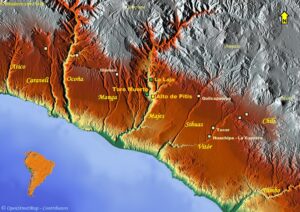
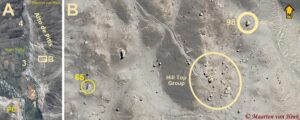

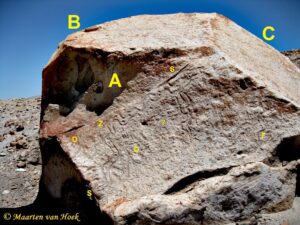
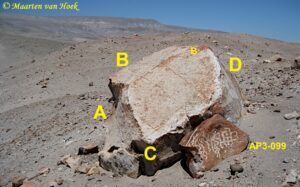
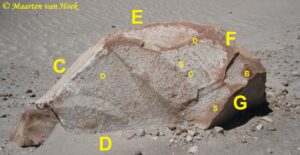
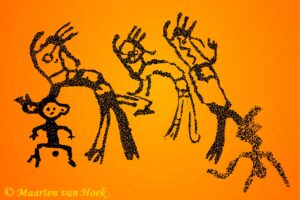
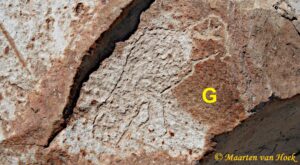
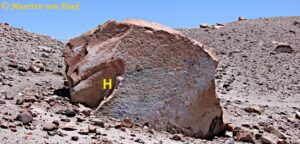

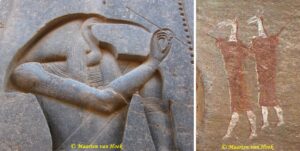
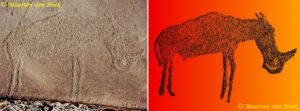

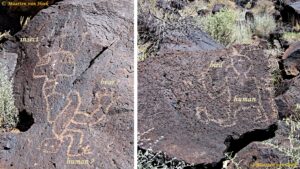



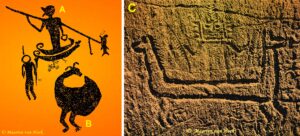


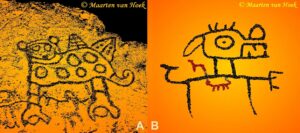
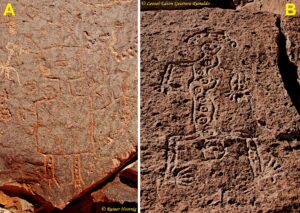




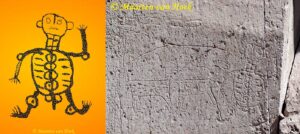
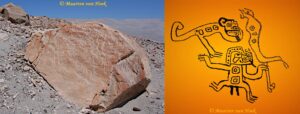
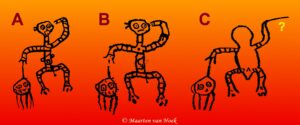
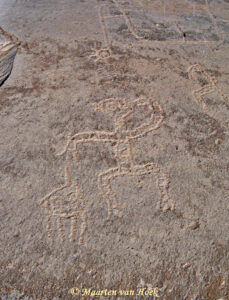
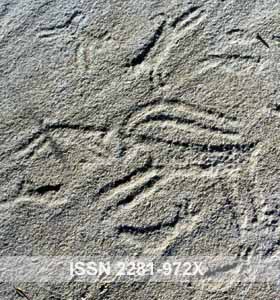













Leave a Reply